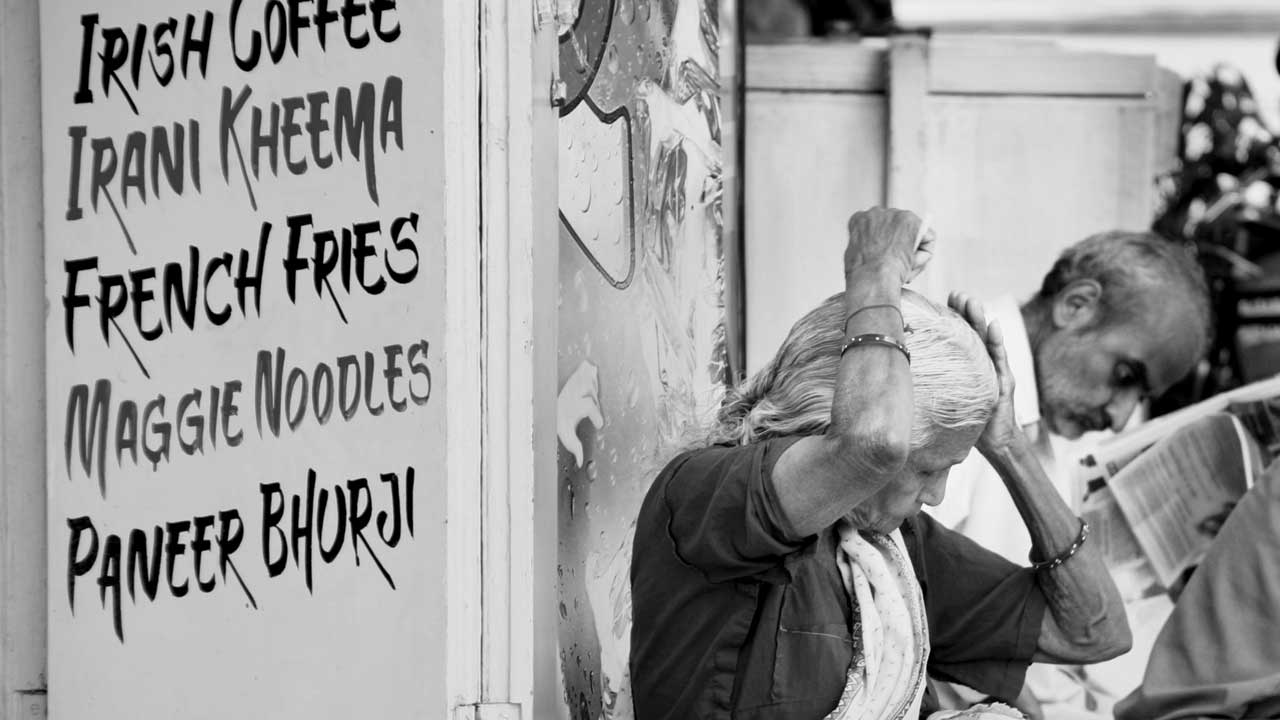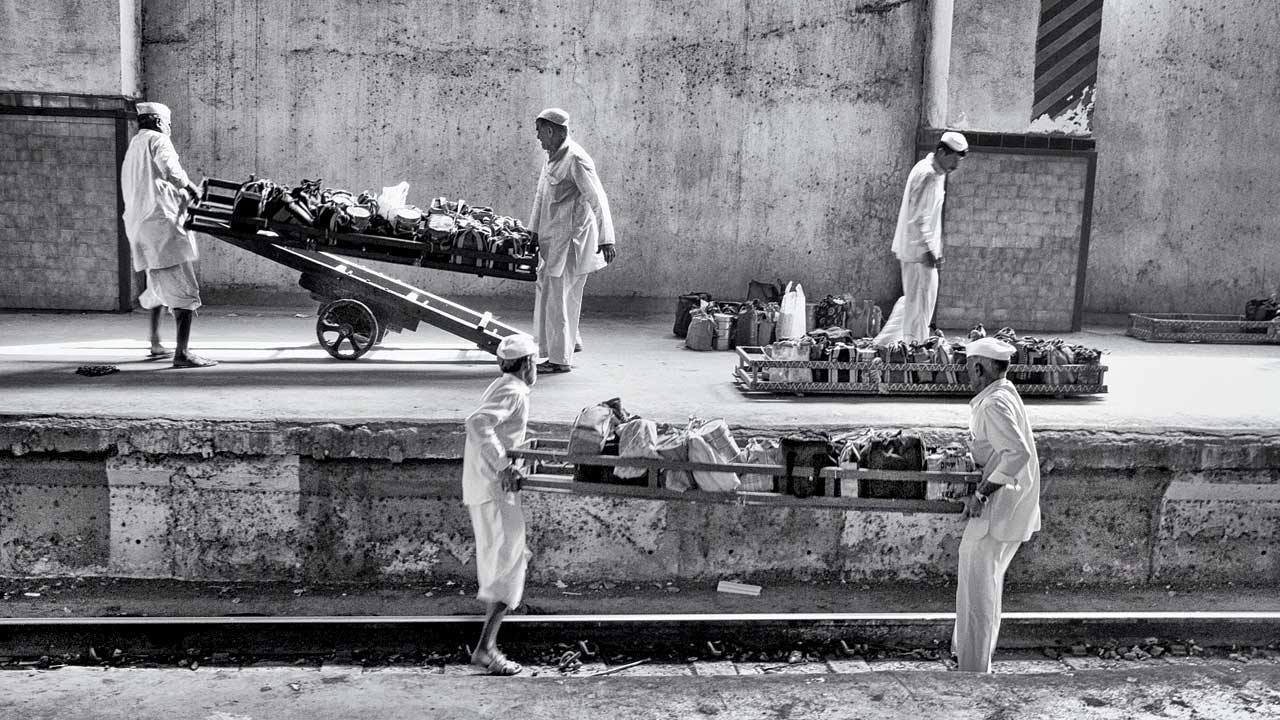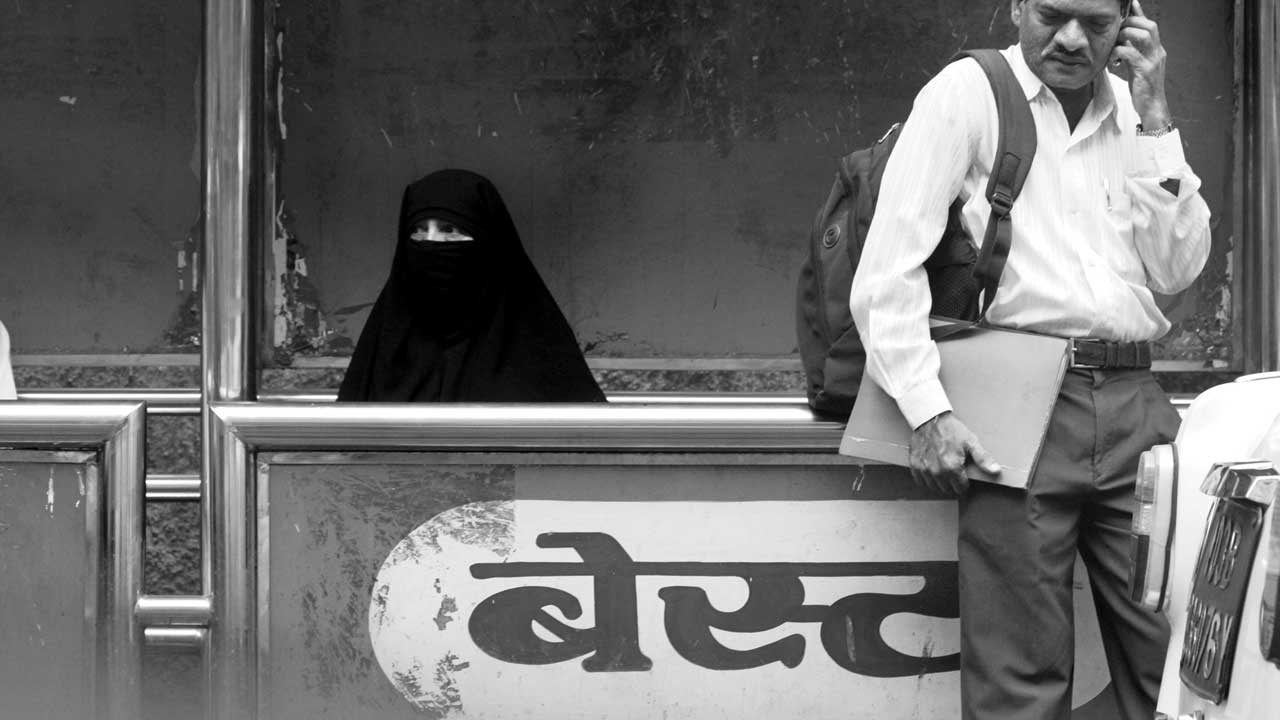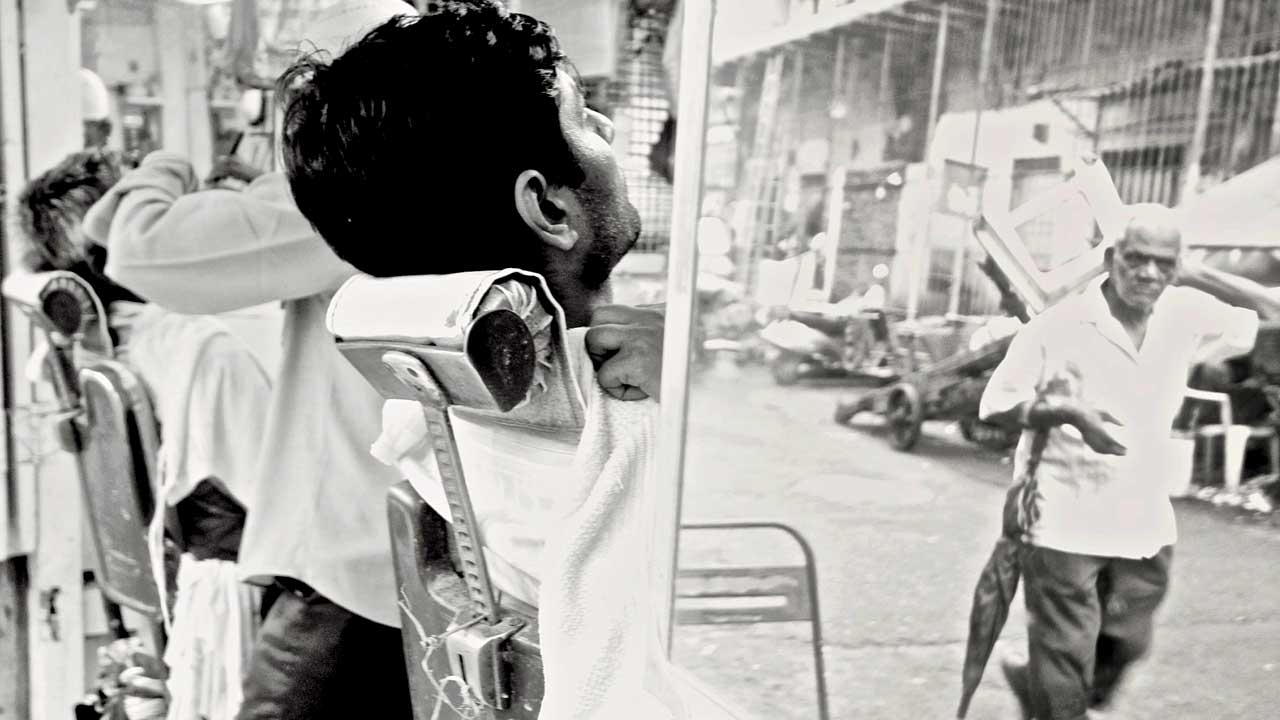Unknown. Unidentified. Unusual. Not named but newsiest, sources of splendid city lore lie waiting to be tapped

Pics/Rahul Da Cunha
 Every week at work, I bump into simple people who stand out, extraordinary for their ordinariness. Engaging, interesting, leading quiet lives of uncommon faith and slog. Missing no chance to give their families whatever they can afford—from little treats to a whole better future.
Every week at work, I bump into simple people who stand out, extraordinary for their ordinariness. Engaging, interesting, leading quiet lives of uncommon faith and slog. Missing no chance to give their families whatever they can afford—from little treats to a whole better future.
ADVERTISEMENT
Fleeting encounters all. So, I wonder what happened in the days that followed my brush with each…
Where must she be, the leather factory worker at Agripada’s Bait ki Chawl, slogging for a hateful boss, to afford her children’s fees for the Madanpura English school?

The scruffy-shirted vendor of handkerchiefs and ballpens in a stall beneath the 1901-opened Empire Royale Hotel on DN Road, taking home to Mulund a once-a-month McDonald’s burger and Coke for his delighted daughter.
The istriwala behind a Bhuleshwar temple, streaming sweat rivulets on his thin hand over the massive iron, because switching on a fan might blow twigs off the nest a bird kept weaving in his kholi.
The willingness with which a barber sent me exploring the lane just uphill from him at Gowalia Tank was charming. No mapping of this vicinity would be complete without visiting Royal Hairdressers, I was advised. Entering the 1925-established saloon of Salahuddin Kallan on a hot afternoon, I discovered it superbly frozen in time. Ten men slumped in creaky metal chairs struggled to sit straight, suddenly courteous. “Madam, yeh gents ki jagah hain,” murmured one, till he realised it was a chat, not a cut I wanted. “Magar mein aapko ek bahut badhiya rasta dikha sakta hoon,” another attendant offered, looking up from where his scissors snipped steadily.

Soon I was climbing the slope up Raghavji Road, marvelling at neat blocks of three-storey residences like Rock View, East View, Hill View and Best View. Rising in the 1930s and ’40s, these presented a fine vision of the rising sun, of a regally sprawling city panorama and of adjacent Forjett Hill. Cantilevered balconies jutting from facades and a uniform height and scale of the buildings make a unique streetscape, strangely intact despite the hideous towers engulfing
Gowalia Tank.
Cabbies from Byculla to Kennedy Bridge, as well as rickshawalas in suburban gullies from Bandra to Borivli provide amazing fodder for articles. “Kitni baar dekha hain yeh picture aapne?” said one I paid at the gate of Maratha Mandir on Club Road, Byculla. He was, of course, referring to Dilwale Dulhania Le Jayenge, screening strong since 1995. Eagerly reeling off real-life dramatic moments he has witnessed in his Maruti, he said, “People plan around DDLJ. Lambi kahaani hain, passengers book evening trains to Gujarat to keep time for the 11.30 am-2.30 pm show before their journey. Kya cheez hain yeh fillum. Young couples return after years, bringing their children to enjoy watching it.”
I explained I’d seen the movie. It was the theatre’s executive director I had an appointment with. He suggested, “Ask him about Mughal-e-Azam. Suna hain, uska bhi bada shaandaar zamana tha.” Spot-on. Dilip Kumar indeed rode a horse here for K Asif’s glittering Mughal-e-Azam premiere on August 5, 1960. Madhubala shimmered, vision-like, in a palanquin. And the print arrived on richly festooned elephants.

Combing lanes east of Grant Road for stories, I came upon a talkative taxi driver, who told me, “Kennedy Bridge ko Pavan Pul kehte hain. Yeh bridgewala toh koi Angrez sahib hoga.” (He was John Pitt Kennedy, Government Railway Engineer in 1850. Not to be confused with Lieutenant Colonel Michael Kavanagh Kennedy, serving with the Engineers in Bombay.) The Urdu author Saadat Hasan Manto referred to this as Pavan Pul—Bridge of Breeze—windblown walking from Byculla where he stayed, to Nana Chowk where he worked at Jyoti Film Studio, for director Ardeshir Irani who introduced India to the talkies.
Paanwalas prove equally rewarding sources, privy to practically authentic information about everything going on around them. One perched cross-legged in the alcove of an ancient, crumbling Dhobi Talao mansion, led me to an old laundry by amusing chance. I was searching for a particular entrance of Jer Mansion, working on a piece about the fascinating Goan dormitories (coors) that still pack its interiors. His transistor blared a Baba Sehgal medley. As the desi rapper crooned, “Madonna the Hollywood star/Baba the Bollywood star”, the paanwala was reminded of what he, quite correctly, thought would surprise me. “Aap yahaan ki har purani cheez ki talaash mein ho, toh dekh lena—Metro ke peechhe Madonna naam ki laundry hain.”
Setting off in quest, I did indeed halt happily at the Madonna Laundry on Cinema Road behind the Metro. In 1939, Dayaram Rajput from Surat started a dhobi service, which his son Damodar transformed into a spiffier laundry. His grandsons, Vasant and Lalit, believe the shop owes its name to both, the obviously Anglicised influence of Dhobi Talao Catholics and Europeans in the barracks located on the rear road.

Advertised even today as “high class washers”, this laundry used to starch crisp the uniforms of cops allotted apartments at Gopal Mansion beside—Deputy Commissioners of the ilk of Alan Thorley, Edwin Saxby and Basil Kane occupied these quarters requisitioned by the government for the police. When 22 of them were ready to be de-requisitioned in the 1970s, the property went on sale, with infamous Harshad Mehta counted among the bidders.
Speaking of cops. As tender as he looked tough, a burly policeman I saw strode towards a bunch of bystanders thronging the Char Null crossroads of Dongri. He stopped to check what I seemed to be waiting for at the junction. On his approach route, he was forced to constantly dodge dirt piles. Sidestepping the garbage mounds, he paused en route for a trio of tiny kittens blindly trying tiny leaps on two abandoned scooters. They craved to curl peacefully in plastic baskets attached to the vehicles. They could, with him gently lowering them there to rest warmed by the sun.
Distracted no further by their soft purrs of satisfaction, the policeman fixed the attentive eye required of his training back on us. He had spotted me being guided by umbrella repairer Isaak Moosa Chhatriwala. We were wandering down narrow paths strewn with surma and attar shops, rowed along aromatic kabab khanas not far from the Baba Gor Siddi dargah. Learning that I was hopeful of profiling the bare handful of Bhishtis, traditional water carriers whose clans settled on the shores below Dongri hill where the earliest Koli fishermen mended nets and built boats, his gimlet gaze cut swiftly beyond the crowds.
The cop pointed to a pair of trot-paced Bhishtis. Just the one carried a heavy goat leather mashaq bag. But his brother was identified as easily. “You can tell a Bhishti from his lop-sided gait. See, one shoulder permanently hangs at least an inch lower than the other. The misaligned posture is because of the way they must angle the body, to avoid water spilling wasted from the mashaq.” Kind-hearted or not, the hawaldaar omitted mention of the fact that Bhishtis often pay hafta to be allowed parking for their patra, a wheelbarrow-type cylinder holding the water, attached with handles and tyres.
Containing a multitude of quirky characters who are skilled raconteurs, community colonies make the most fertile hunting grounds for urban chroniclers. A centre caring for the elderly, within a Parsi baug left me with a pleasant memory. Wrapping up a last interview on Hughes Road, I was glad to have solved the Mystery of the Mannequin in the Balcony of Mohammedbhoy Building. And found Zareer Masani’s description in And All Is Said: Memoir of a Home Divided, of how his Swatantra Party leader father Minoo “made do with half a bun and cup of tea at Cecil Cafe opposite the small flat where he was a lodger with a political friend”. Though Cecil has disappeared, nearby Cafe New York continues dispensing a flow of brun and beer.
“Go home safely,” a nameless grey-haired lady darted to the door of the Parekh Dharamshala in Khareghat Colony, to caution. “You can trip over those terrible paver blocks on the road outside.” Assuring her I’d be careful, I shared that the cabbie ferried me right after I decided to deliberately mispronounce the destination: Hew-jis Road. “Ah, this is Bombay,” she cackled, hand thumped to her forehead in mock despair. “So long as we understand what it all means. We are like that only!”
Too true. We are like that only. Salute, Bombay Anonymous.
Author-publisher Meher Marfatia writes fortnightly on everything that makes her love Mumbai and adore Bombay. You can reach her at meher.marfatia@mid-day.com/www.meher marfatia.com
 Subscribe today by clicking the link and stay updated with the latest news!" Click here!
Subscribe today by clicking the link and stay updated with the latest news!" Click here!







